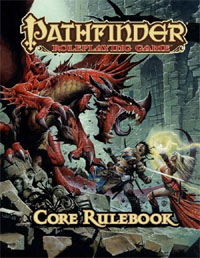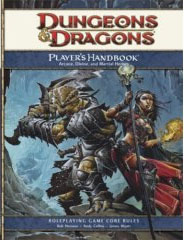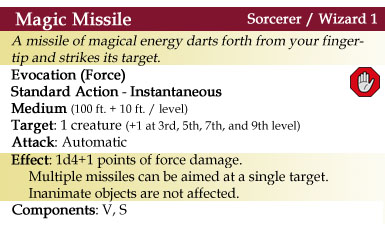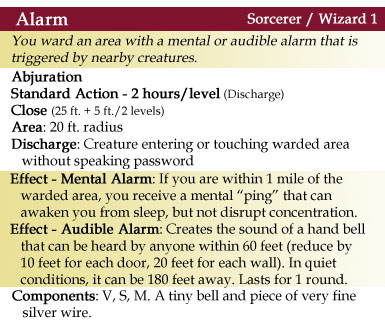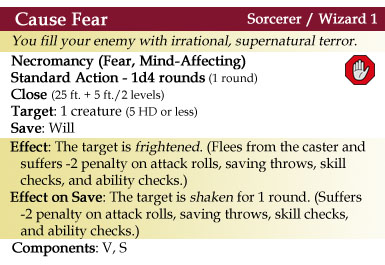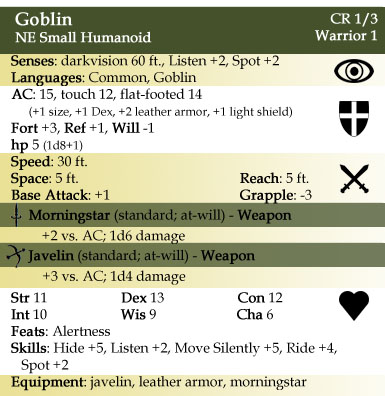In “Revisiting Encounter Design“, I make the argument that 3rd Edition plays better if you use old school encounter design. To briefly sum up:
- Design most encounters around an EL 2 to 4 lower than the party’s level.
- Feel free to use large mobs (10+ creatures) with an EL equal to the party’s level.
- Sparingly use encounters with an EL equal to the party’s level.
- Occasionally throw in an EL+2 or EL+4 encounter.
Using this encounter design results in faster combats (which means you accomplish more in a typical game session) and drastically reduces the likelihood of the 15 minute adventuring day.
This advice is not radically different from that provided in the 3.5 DMG, which suggests that encounters should be 30% with ELs lower than the party’s level, 50% with ELs equal to the party’s level, 15% with ELs 1-4 higher than the party’s level, and 5% with ELs 5+ above the party’s level. (Let’s call this the 30/50/15/5 ratio for easy reference.)
THE ANALYSIS
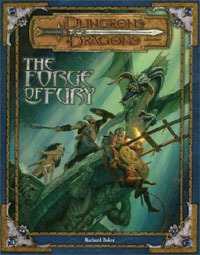 This 30/50/15/5 ratio was not atypical in early 3rd Edition modules. For example, here’s the EL breakdown of combat encounters in the first section of The Forge of Fury (designed for a group of 3rd to 5th level characters):
This 30/50/15/5 ratio was not atypical in early 3rd Edition modules. For example, here’s the EL breakdown of combat encounters in the first section of The Forge of Fury (designed for a group of 3rd to 5th level characters):
EL 1
EL 2 (x7)
EL 3 (x3)
EL 4 (x4)
EL 5 (x4)
EL 10
If we use an average party level of 4th, this ratio breaks down to: 55/20/20/5. Not an exact match, obviously, but definitely within the ballpark of having 80% of your encounters equal to your lower than the party’s level.
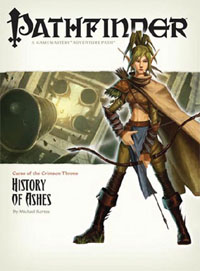 But as you look at modules published in the last 5-6 years, the misguided “common wisdom” of how to design encounters for 3rd Edition had taken hold. For example, here’s the encounter breakdown from part four of Paizo’s Curse of the Crimson Throne (designed for 10th level characters):
But as you look at modules published in the last 5-6 years, the misguided “common wisdom” of how to design encounters for 3rd Edition had taken hold. For example, here’s the encounter breakdown from part four of Paizo’s Curse of the Crimson Throne (designed for 10th level characters):
EL 8
EL 10
EL 11 (x2)
EL 12 (x2)
EL 13
EL 14 (x3)
That’s a ratio of 10/10/80/0. 80% of the encounters are now above the party’s average level instead of below it.
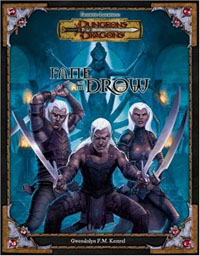 You can see the same design principles in Wizard’s modules. For example, here’s Fane of the Drow (designed for 4th level characters):
You can see the same design principles in Wizard’s modules. For example, here’s Fane of the Drow (designed for 4th level characters):
EL 3
EL 4 (x4)
EL 5 (x5)
EL 6 (x5)
EL 7 (x2)
Which is roughly 5/25/70/0.
Similarly, here’s the breakdown from “The Demon Council”, the last section of Expedition to the Demonweb Pits (for 11th level characters):
EL 10 (x2)
EL 11 (x3)
EL 12 (x10)
EL 13 (x4)
EL 14 (x2)
Which gives us a ratio of 10/15/75/0. (This one looks a little better if you assume that the PCs are supposed to level up to 12th halfway through this sequence.)
THE TIP
A couple weeks ago, as I looked over my recent usage of published 3rd Edition scenarios, I realized that I’ve been instinctively using modules published in the last 5-6 years when the PCs are 2-3 levels higher than the recommended level.
For example, when you apply this guideline to the modules used above you end up with:
- Curse of the Crimson Throne 4: 50/10/30/0
- Fane of the Drow: 60/30/10/0
- “The Demon Council”: 70/20/10
Which definitely slants them back into the ballpark of what we’re looking for.
Reflecting on this also taught me something new: The tips in “Revisiting Encounter Design” are designed to widen the dynamic range of your encounters. Shifting the recommended level for these published modules made me realize that we’re also widening the dynamic range of our adventure design.
Fane of the Drow, for example, isn’t unachievable for 4th level characters. But it is a tough slog. And if you use “tough slog” as your baseline for normalcy, then you have nowhere to go: If your 4th level characters face anything tougher than this, their odds of dying horribly begin to skyrocket. Which means that if your 4th level characters “skip ahead” or take an unexpected shortcut, they could easily run headlong into a deathtrap.
But if Fane of the Drow is, instead, your expected baseline for 5th or 6th level characters, suddenly you’ve got room to breathe.
And where would having room to breathe become particularly important? Node-Based Scenario Design.
Revising your approach to encounter design allows you to be more fluid and dynamic in how you run and combine your encounters; it also allows you be more fluid and dynamic in how you run and combine your scenarios.


